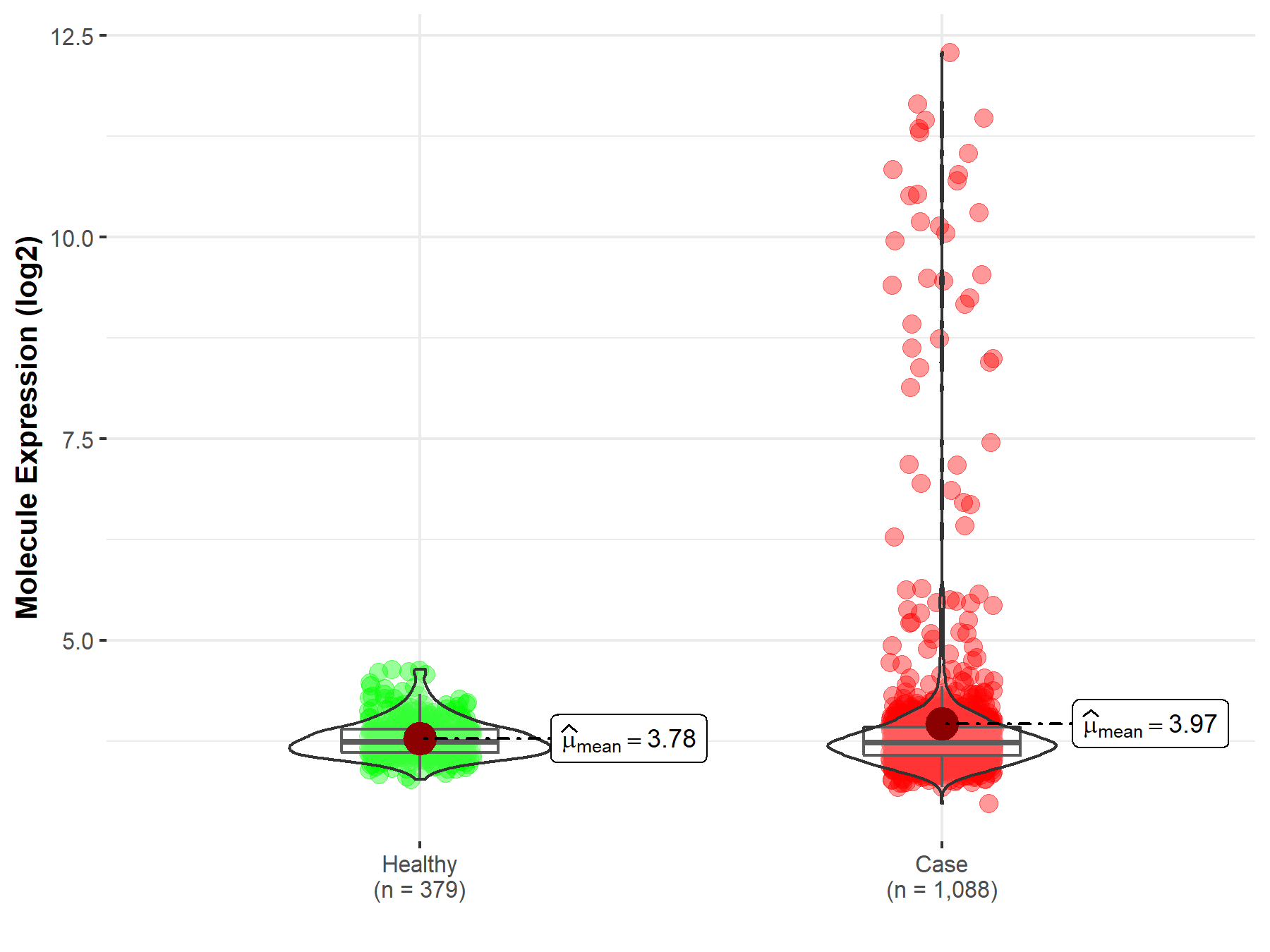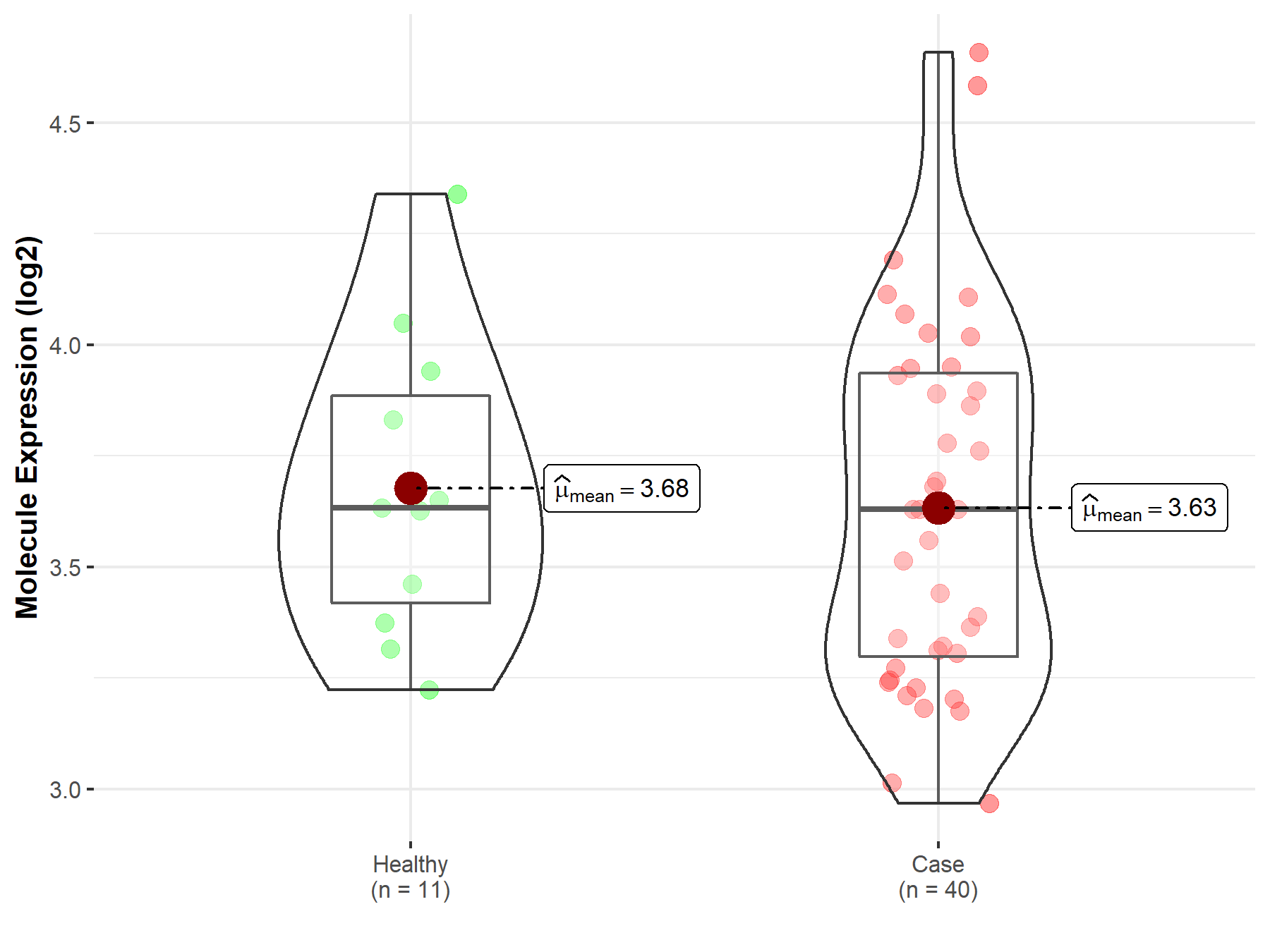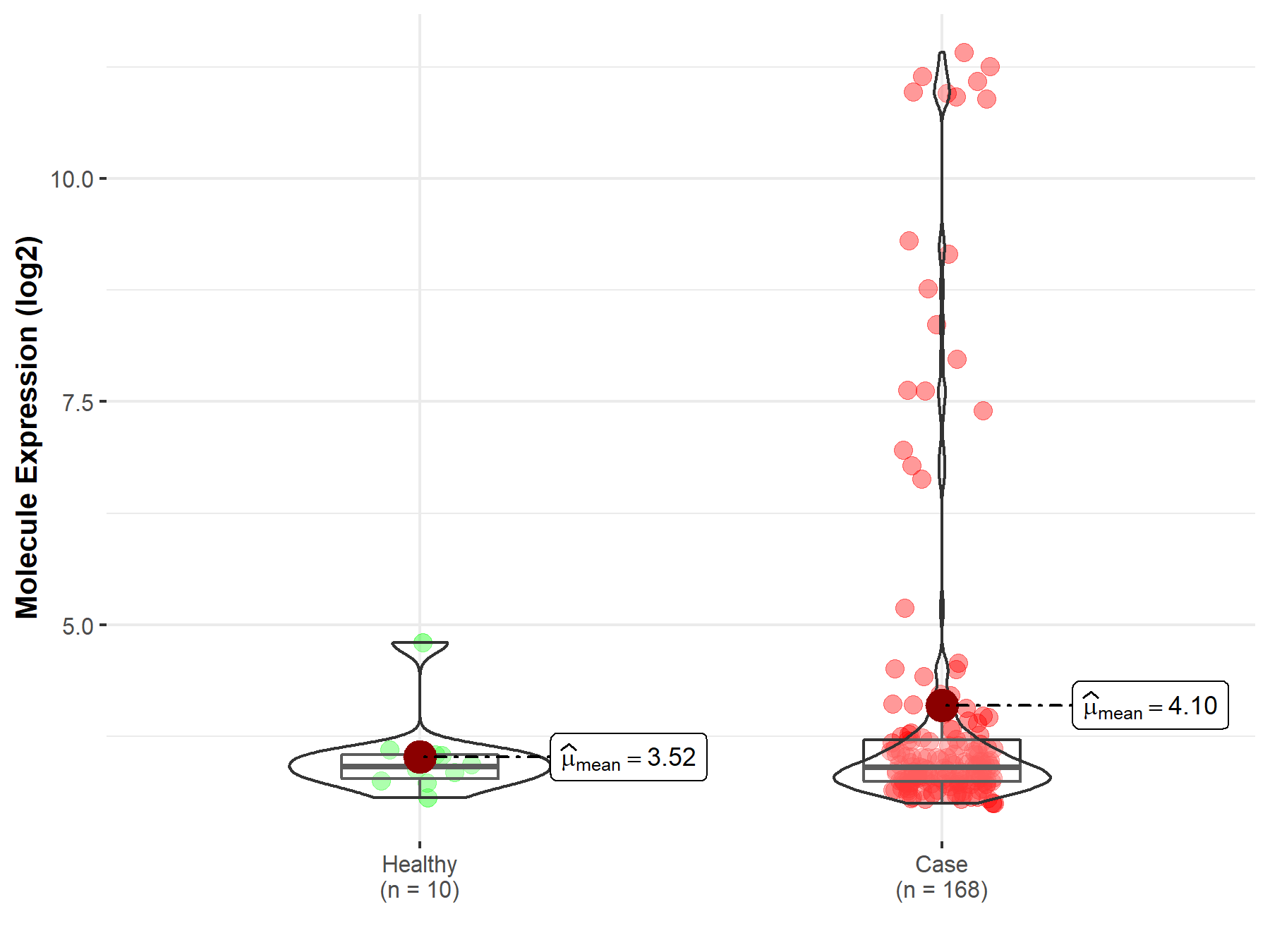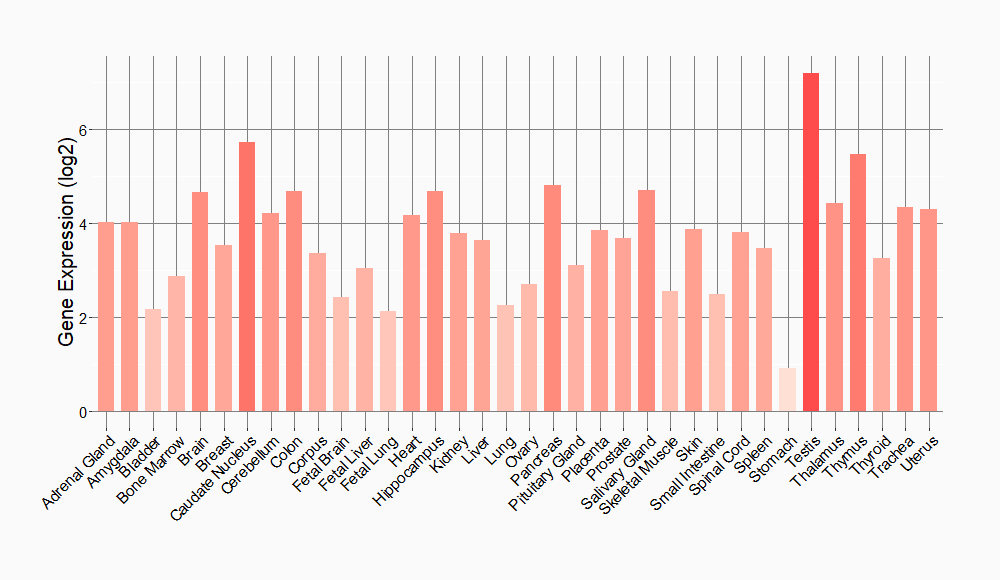Molecule Information
General Information of the Molecule (ID: Mol00108)
| Name |
Melanoma-associated antigen 6 (MAGEA6)
,Homo sapiens
|
||||
|---|---|---|---|---|---|
| Synonyms |
Cancer/testis antigen 1.6; CT1.6; MAGE-6 antigen; MAGE3B antigen; MAGE6
Click to Show/Hide
|
||||
| Molecule Type |
Protein
|
||||
| Gene Name |
MAGEA6
|
||||
| Gene ID | |||||
| Location |
chrX:152766136-152769716[-]
|
||||
| Sequence |
MPLEQRSQHCKPEEGLEARGEALGLVGAQAPATEEQEAASSSSTLVEVTLGEVPAAESPD
PPQSPQGASSLPTTMNYPLWSQSYEDSSNQEEEGPSTFPDLESEFQAALSRKVAKLVHFL LLKYRAREPVTKAEMLGSVVGNWQYFFPVIFSKASDSLQLVFGIELMEVDPIGHVYIFAT CLGLSYDGLLGDNQIMPKTGFLIIILAIIAKEGDCAPEEKIWEELSVLEVFEGREDSIFG DPKKLLTQYFVQENYLEYRQVPGSDPACYEFLWGPRALIETSYVKVLHHMVKISGGPRIS YPLLHEWALREGEE Click to Show/Hide
|
||||
| Function |
Activator of ubiquitin ligase activity of RING-type zinc finger-containing E3 ubiquitin-protein ligases that acts as a as repressor of autophagy. May enhance ubiquitin ligase activity of TRIM28 and stimulate p53/TP53 ubiquitination by TRIM28. Proposed to act through recruitment and/or stabilization of the Ubl-conjugating enzyme (E2) at the E3:substrate complex. May play a role in tumor transformation or aspects of tumor progression. In vitro promotes cell viability in melanoma cell lines.
Click to Show/Hide
|
||||
| Uniprot ID | |||||
| Ensembl ID | |||||
| HGNC ID | |||||
| Click to Show/Hide the Complete Species Lineage | |||||
Type(s) of Resistant Mechanism of This Molecule
Drug Resistance Data Categorized by Drug
Approved Drug(s)
2 drug(s) in total
| Drug Sensitivity Data Categorized by Their Corresponding Mechanisms | ||||
|
|
||||
| Disease Class: Medulloblastoma | [1] | |||
| Sensitive Disease | Medulloblastoma [ICD-11: 2A00.10] | |||
| Sensitive Drug | Cisplatin | |||
| Molecule Alteration | Expression | Down-regulation |
||
| Experimental Note | Identified from the Human Clinical Data | |||
| Cell Pathway Regulation | Cell apoptosis | Activation | hsa04210 | |
| p53 signaling pathway | Activation | hsa04115 | ||
| In Vitro Model | UW228 cells | Brain | Homo sapiens (Human) | CVCL_8585 |
| R262 cells | Bone marrow | Homo sapiens (Human) | CVCL_VU83 | |
| R300 cells | Bone marrow | Homo sapiens (Human) | CVCL_VU84 | |
| UW426 cells | Bone marrow | Homo sapiens (Human) | CVCL_DH82 | |
| Experiment for Molecule Alteration |
Western blotting analysis | |||
| Experiment for Drug Resistance |
MTS assay | |||
| Mechanism Description | The repression of MAGE-A by miR-34a results in increased expression of p53 thus lead to resistance. | |||
| Drug Sensitivity Data Categorized by Their Corresponding Mechanisms | ||||
|
|
||||
| Disease Class: Medulloblastoma | [1] | |||
| Sensitive Disease | Medulloblastoma [ICD-11: 2A00.10] | |||
| Sensitive Drug | Mitomycin | |||
| Molecule Alteration | Expression | Down-regulation |
||
| Experimental Note | Identified from the Human Clinical Data | |||
| Cell Pathway Regulation | Cell apoptosis | Activation | hsa04210 | |
| p53 signaling pathway | Activation | hsa04115 | ||
| In Vitro Model | UW228 cells | Brain | Homo sapiens (Human) | CVCL_8585 |
| R262 cells | Bone marrow | Homo sapiens (Human) | CVCL_VU83 | |
| R300 cells | Bone marrow | Homo sapiens (Human) | CVCL_VU84 | |
| UW426 cells | Bone marrow | Homo sapiens (Human) | CVCL_DH82 | |
| Experiment for Molecule Alteration |
Western blotting analysis | |||
| Experiment for Drug Resistance |
MTS assay | |||
| Mechanism Description | The repression of MAGE-A by miR-34a results in increased expression of p53 thus lead to resistance. | |||
Disease- and Tissue-specific Abundances of This Molecule
ICD Disease Classification 02

| Differential expression of molecule in resistant diseases | ||
| The Studied Tissue | Nervous tissue | |
| The Specified Disease | Brain cancer | |
| The Expression Level of Disease Section Compare with the Healthy Individual Tissue | p-value: 2.99E-07; Fold-change: -1.05E-02; Z-score: -4.44E-02 | |
|
Molecule expression in the diseased tissue of patients
Molecule expression in the normal tissue of healthy individuals
|
||
| Disease-specific Molecule Abundances |

|
Click to View the Clearer Original Diagram |
| The Studied Tissue | Brainstem tissue | |
| The Specified Disease | Glioma | |
| The Expression Level of Disease Section Compare with the Healthy Individual Tissue | p-value: 5.31E-01; Fold-change: -8.95E-03; Z-score: -1.23E-01 | |
|
Molecule expression in the diseased tissue of patients
Molecule expression in the normal tissue of healthy individuals
|
||
| Disease-specific Molecule Abundances |

|
Click to View the Clearer Original Diagram |
| The Studied Tissue | White matter | |
| The Specified Disease | Glioma | |
| The Expression Level of Disease Section Compare with the Healthy Individual Tissue | p-value: 7.23E-01; Fold-change: -3.67E-03; Z-score: -1.08E-02 | |
|
Molecule expression in the diseased tissue of patients
Molecule expression in the normal tissue of healthy individuals
|
||
| Disease-specific Molecule Abundances |

|
Click to View the Clearer Original Diagram |
| The Studied Tissue | Brainstem tissue | |
| The Specified Disease | Neuroectodermal tumor | |
| The Expression Level of Disease Section Compare with the Healthy Individual Tissue | p-value: 1.03E-02; Fold-change: -3.38E-03; Z-score: -7.05E-03 | |
|
Molecule expression in the diseased tissue of patients
Molecule expression in the normal tissue of healthy individuals
|
||
| Disease-specific Molecule Abundances |

|
Click to View the Clearer Original Diagram |
Tissue-specific Molecule Abundances in Healthy Individuals


|
||
References
If you find any error in data or bug in web service, please kindly report it to Dr. Sun and Dr. Zhang.
